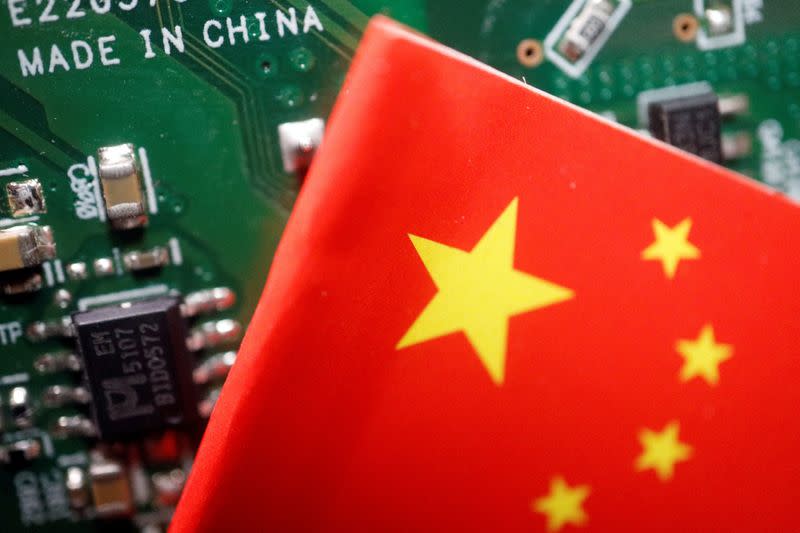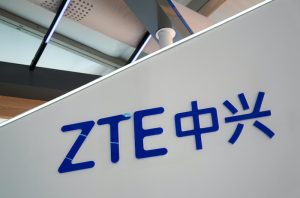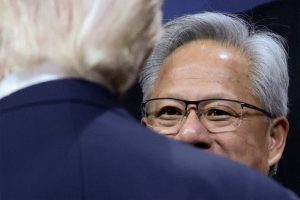Chinese companies used relatively simple methods to get around bans on them buying US equipment to make advanced computer chips, according to a new report on Tuesday.
The 2023 annual report to Congress by the US-China Economic and Security Review Commission – a 741-page tome – explains why the initial round of chip restrictions imposed by the US government did not work well.
Beijing bought nearly $14-billion worth of chipmaking equipment from the Netherlands and other countries this year, before they also imposed bans to compliment the US-led effort.
ALSO SEE: China Plans New Checks For Auditors, Accounting Firms
The Biden administration recently updated its export curbs aimed at thwarting advances in the country’s chip sector, by banning Chinese chipmakers from getting tools if they can be used to make advanced chips at the 14-nanometre node or below.
There was a second weakness in the initial curbs imposed by the US and its allies.
With the Commerce Department using the 14nm restriction limit, “importers are often able to purchase the equipment if they claim it is being used on an older production line, and with limited capacity for end-use inspections, it is difficult to verify the equipment is not being used to produce more advanced chips,” the report stated.
China splashed on chipmaking tools before Dutch joined US move
The finding comes as the US seeks to determine how Chinese telecoms giant Huawei was able to produce an advanced 7nm chip to power its Mate 60 Pro smartphone at China’s top chipmaker SMIC, despite the export curbs announced last year.
Huawei and SMIC were also added to a trade restriction list in 2019 and 2020, which in theory bars US suppliers from shipping certain technology to the companies.
China watchers had theorized that SMIC could have made the chip with equipment obtained prior to the October 2022 rules, but it had other options for obtaining the equipment from oversees, the report shows.
The United States managed to plug a key loophole in its efforts to stymie China’s access to advanced chipmaking tools by convincing allies Japan and the Netherlands, with similarly robust chipmaking equipment industries, to announce their own restrictions on exports of the coveted technology.
But China stockpiled equipment by taking advantage of the lagtime between the US rules announced in October 2022, and Japan and the Netherlands’ similar moves in July and September of 2023 respectively, the report details.
According to the document, between January and August 2023, China imported $3.2 billion worth of chipmaking machines from the Netherlands, a 96% increase over the $1.7 billion recorded over the same period in 2022.
China’s imports of semiconductor equipment from all countries totaled $13.8 billion over the first eight months of 2023, it added.
The report does not outline a specific recommendation to address the gaps in the US rules, but urges Congress to request an annual evaluation, to be completed within six months by the General Accountability Office and later made public, of the effectiveness of export controls on chipmaking equipment to China.
The US-China Economic and Security Review Commission was created in 2000 to submit an annual report to Congress on the national security implications of the economic ties between the United States and China, and to provide recommendations for government action.
- Reuters with additional inputs and editing by Jim Pollard
ALSO SEE:
Huawei’s China Smartphone Sales Soar, Closes Gap on Apple
US Expands Ban on Top AI Chips, Curbs to Hit Many Countries
New Huawei Phone Spurs Fear China Got Around US Chip Curbs
Chinese Tech Giants Rush to Buy Nvidia’s Top AI Chips – FT
Dutch Restrict Chip Exports Amid US Push to Tighten China Curbs
Banned Nvidia Chips Available in China’s Underground Markets
US Chip Sanctions Have Hardly Impacted China’s AI Capability






















